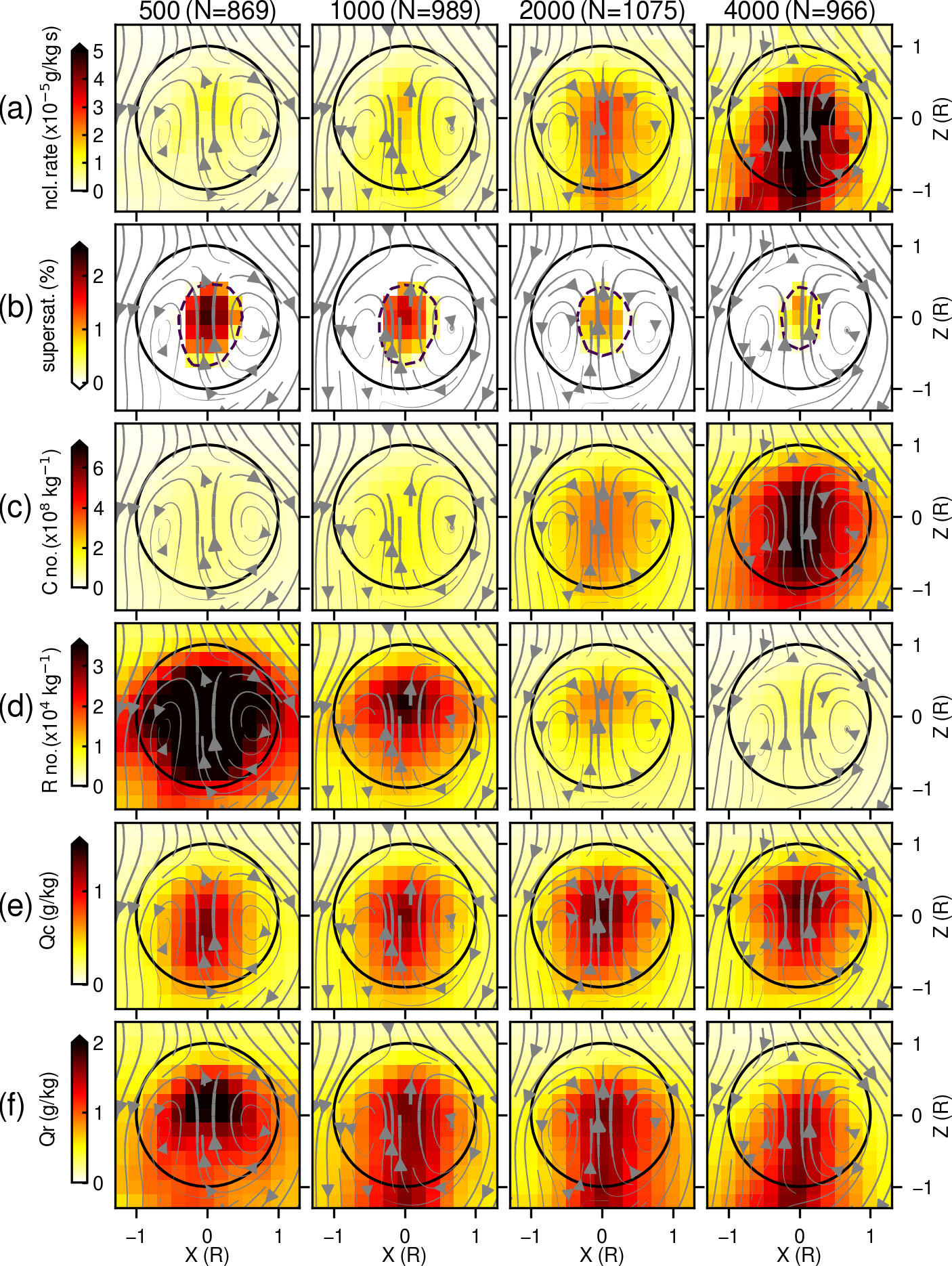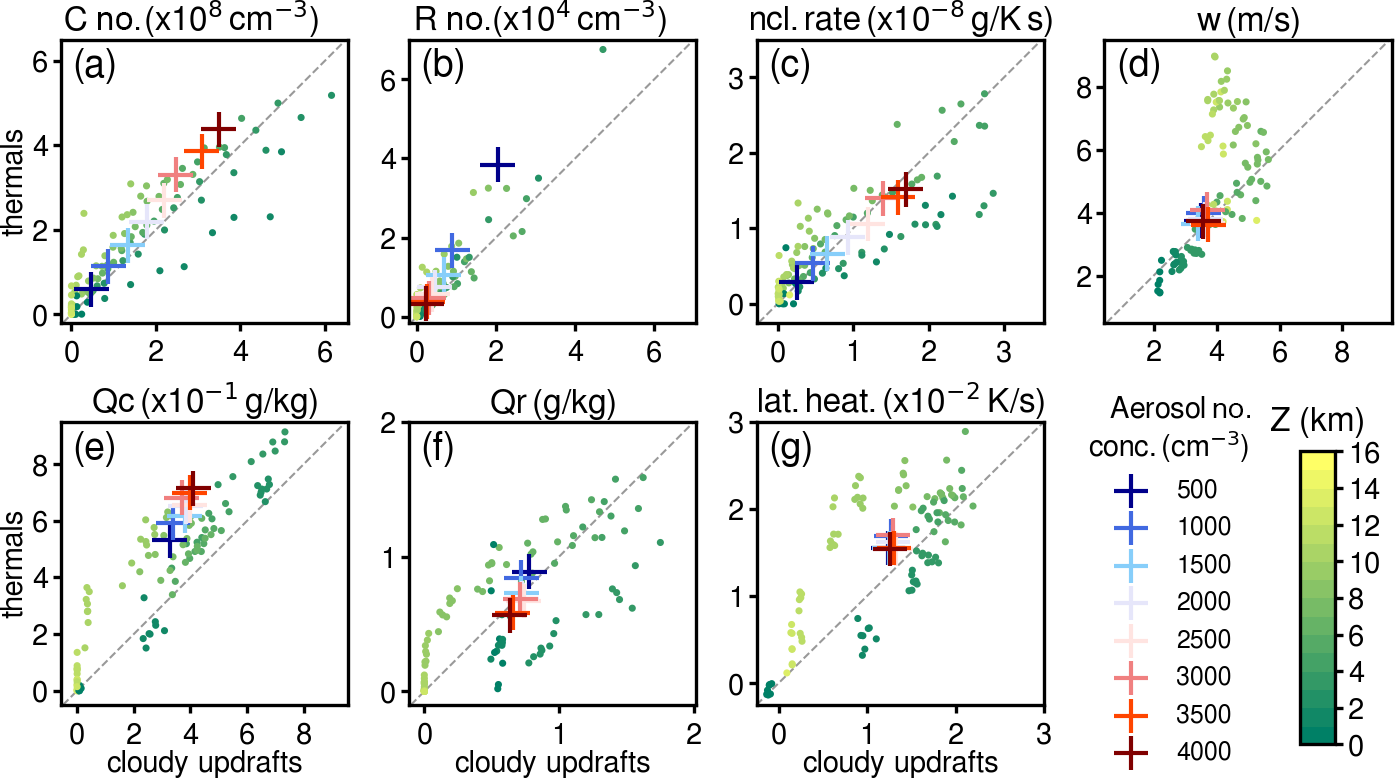Novel thermal tracking analysis of aerosol-deep convection interactions
Submitter
Matsui, Toshihisa — Earth System Science Interdisciplinary Center at University of Maryland
van Lier-Walqui, Marcus — Columbia University
Area of research
Cloud-Aerosol-Precipitation Interactions
Journal Reference
Science
Computational cloud-process simulations are used to investigate how atmospheric air pollution affects the dynamics and microphysics of isolated deep convection through a novel tracking analysis of cumulus thermals.
Impact
In comparison with traditional grid-based analysis, tracking small-scale spherical rising features (i.e., cumulus thermals) provides tight coupling between thermodynamics, cloud droplet, and raindrop formation within deep convective clouds perturbed by different air pollution levels. These results have the potential to serve as a stronger foundation for improving subgrid-scale convective parameterizations.
Summary
We investigate how aerosol concentrations modify key properties of updrafts in eight large-eddy-permitting simulations of a case study of isolated convection over Houston, Texas, in which convection is explicitly simulated and microphysical processes are parameterized. Dynamical and liquid-phase microphysical responses are investigated using 1) static cloudy updraft grid cells versus 2) tracked cumulus thermals. Both frameworks revealed that higher aerosol concentrations lead to higher cloud number concentrations and lower rain number concentrations, but they weakly affect convective dynamics. On the other hand, the novel thermal analysis provides more active convective air masses than traditional cloudy updraft grid analysis, especially at upper levels in terms of updraft velocity and cloud microphysics concentrations. To conclude, the novel thermal tracking analysis adds rich quantitative information about the rates and covariability of microphysical processes and thermodynamics throughout tracked thermal life cycles, which can serve as a stronger foundation for improving subgrid-scale convective parameterizations.



